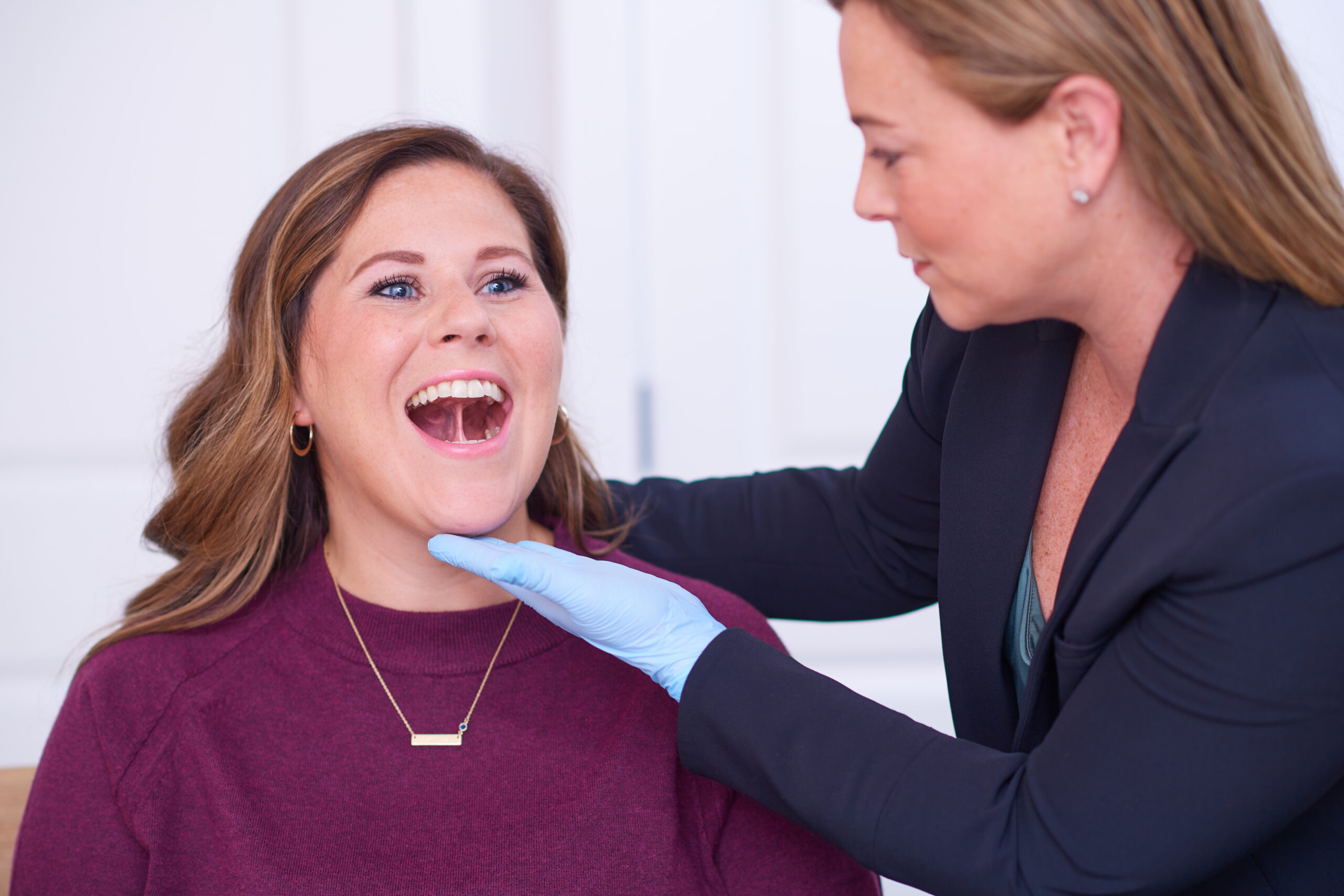Unveiling Orofacial Myology: Exploring Tools and Treatment Approaches
The information shared in this blog has been drawn from Mary Billings’, MS, CCC, COM, and Dianah Davidson’s, BS, RDH, COM IAOM Approved Introductory Course: Make the Connection 2021, American Speech-Language-Hearing Association Scope of Practice in Speech-Language Pathology, and Maureen Cooney’s Common Questions regarding Orofacial Myology. Reference: Orofacial Myology: Make the Connection, Mary Billings, MS, CCC, COM & Dianah Davidson, BS, RDH, COM., Milwaukee, WI, 2021, pp.10-11, 36-39
How Can Orofacial Myology Help?
After a comprehensive evaluation by a speech-language pathologist, an individualized care plan is crafted. When addressing orofacial myofunctional disorders, a holistic approach is taken, considering the distinct roles of facial and mouth muscles. This ensures their optimal functioning, enabling clear speech, safe eating, effortless breathing, and supporting normal orofacial development. The evaluation covers muscles associated with the tongue, lips, cheeks, jaw, and neck, addressing key areas:- Breathing and Airway
- Posture
- Chewing and Swallowing
- Speech/Articulation and Fluency
- Facilitating successful orthodontic treatment by preventing relapse or change
Intervention Approaches:
The scope of a speech-language pathologist's practice, as outlined by ASHA, covers communication and swallowing across the lifespan. Interventions may include establishing good oral function and proper oral rest posture, addressing nasal hygiene, breathing, and elimination of noxious habits, improving range of motion of oral structures, enhancing posture and ensuring quality, restful sleep, preparing for treatment of tethered oral tissues (tongue, lip, cheek ties).Adult intervention may specifically focus on the following additional areas: atypical speech sound productions or distorted sounds, sleep apnea, fluency, TMD/TMJ, degenerative disorders, chronic neck/back pain, malocclusion
For toddlers/adolescent intervention, focus areas extend to atypical speech sounds, picky eating, problem feeding, stuttering, language disorders, social pragmatic language, drooling, poor oral control, and malocclusion.
Infant intervention may specifically target (assisting with baby’s latch, successful/efficiently transfer, safe swallow), increasing range of motion of oral structures, drooling, or poor oral control.
Please note that these areas are not exhaustive but provide an overview of the speech-language pathologist's scope of practice.
Reference: Orofacial Myology: Make the Connection, Mary Billings, MS, CCC, COM & Dianah Davidson, BS, RDH, COM., Milwaukee, WI, 2021, pp. 36-39
Preparing for Treatment Sessions:
Children's comfort levels during therapy sessions vary. Reassure your child about the sessions' safety and fun nature. Reassure your child that you will be there when the therapy session has concluded. If you need to escort your child back to the therapy session, allow your child to learn with the therapist. The last few minutes of the therapy session are allocated to discuss home programming with the parent, guardian, or caregiver.Completing assigned homework can help familiarize your child with activities, boosting confidence in their abilities. Communicate any questions or concerns with the therapist at the beginning of each session. Informing them of questions or concerns at the start of a session allows them time to fully answer your questions.
Remember: Be positive. Be patient. Trust the process. Celebrate the progress. Tools Used During Therapy:
- Tongue depressors
- Tube
- Bite blocks
- Button pull
- Gloves
- Swabs
- Myo spots
- Cheek retractor
- Nuk brush
- Vibe critter
- Z vibe
- All straws
- Dum dums
- Homework sheet
Finding Additional Resources:
For more information, consult your speech-language pathologist or explore these resources:- TalkTools: Parents Resources
- Super Duper Publications: Handy Handouts
- ASHA: Orofacial Myofunctional Disorders, Speech and Language, Fluency, Pediatric Feeding and Swallowing
- IAOM: International Association of Orofacial Myology
- Kaufman Children’s Center: Childhood Apraxia of Speech Resources
- National Stuttering Association
- Ages and Stages: Parent/Guardian Activities
- Social Thinking: Michele Garcia Winner's Resources
Initiating conversations with a speech-language pathologist is a valuable first step in understanding orofacial myology and exploring tailored resources for comprehensive care.

